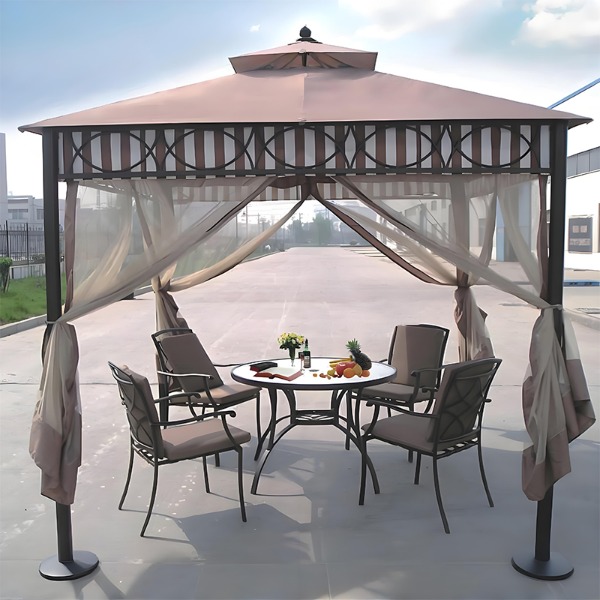Oct 24, 2025
When selecting shade and shelter for your outdoor space, combining protection from both weather and insects is often a top priority. A Waterproof Pop Up Gazebo equipped with mesh panels or netting can deliver on both fronts. Meanwhile, a Gazebo With Netting ensures a bug-free environment while still preserving airflow and visibility.
Why a Waterproof Pop Up Gazebo With Netting Makes Sense
Dual Protection: Rain & Insects
One of the biggest challenges outdoors is unpredictable weather and bothersome insects. A Waterproof Pop Up Gazebo protects against sudden showers or light rain, allowing your event to continue uninterrupted. When combined with netting, the Gazebo With Netting aspect keeps flies, mosquitoes, and other pests at bay without having to enclose the structure fully.
Many pop-up gazebos offer water-resistance, but for extended outdoor use, you want a canopy with reliable waterproofing—coated fabrics, sealed seams, and effective drainage. As pointed out by guides on waterproof canopy construction, applying seam sealants or using high-quality coated fabrics strengthens waterproof performance.
Ventilation & Comfort
Because the netting is permeable to air, a Gazebo With Netting retains breeze and airflow, reducing stuffiness inside. Unlike full-wall enclosures, mesh sidewalls strike a balance: they block pests but allow you to enjoy the outdoor ambiance. This design is particularly important in warm climates or during summer.
Ease of Use & Flexibility
Pop-up gazebos are favored for their rapid setup and takedown. When engineered well, a Waterproof Pop Up Gazebo can be deployed quickly by two people. The addition of detachable or roll-up netting panels allows you to adapt to various conditions—open during dry times, closed when insects surge.

Key Design Features & Considerations
1. Canopy Material & Waterproofing
Look for fabrics that are PU- or PVC-coated or those with hydrostatic head ratings. These coatings help repel water.
Seam sealing is crucial. Seams without reinforcement may leak. Many guides recommend applying a silicone or seam sealant to reinforce weak points.
Choose canopy shapes that encourage runoff—sloped or peaked roofs help prevent water pooling, which can strain structure integrity. This is especially important because water pooling can cause sagging or stress collapse.
2. Mesh / Netting Quality
The netting should be fine enough to keep out small mosquitoes but not so dense as to block airflow.
Use durable mesh material, preferably tear-resistant or reinforced at edges.
Integration methods matter: zippers, Velcro, snaps should operate smoothly and align well with the frame.
3. Frame & Structural Support
A sturdy frame (steel or aluminum) with corrosion resistance and adequate thickness helps support both canopy and netting tension.
Reinforced joints, gussets, cross-bracing, or center stabilizers add structural integrity under wind loads.
4. Anchoring & Stability
Even the best Waterproof Pop Up Gazebo With Netting can be vulnerable if not anchored correctly. According to anchoring guides, using proper weights, stakes, and tensioned guy lines is critical.
Avoid lightweight or makeshift anchors like empty buckets. Use water/sand-filled weights or solid stake systems.
Pre-tensioning the canopy before anchoring helps reduce wind lift and ensures stability.
Practical Tips for Use & Maintenance
After any rain, inspect and wipe down the canopy and netting. Let them air-dry fully before storage to avoid mildew.
Periodically reapply seam sealant as coatings can degrade over time.
Check all fasteners, zippers, Velcro periodically and tighten or repair as needed.
During heavy wind or storms, lower or remove the canopy and netting to reduce wind loading.
Store your Waterproof Pop Up Gazebo With Netting in dry, cool conditions when not in use.
Your email address will not be published. Required fields are marked *
